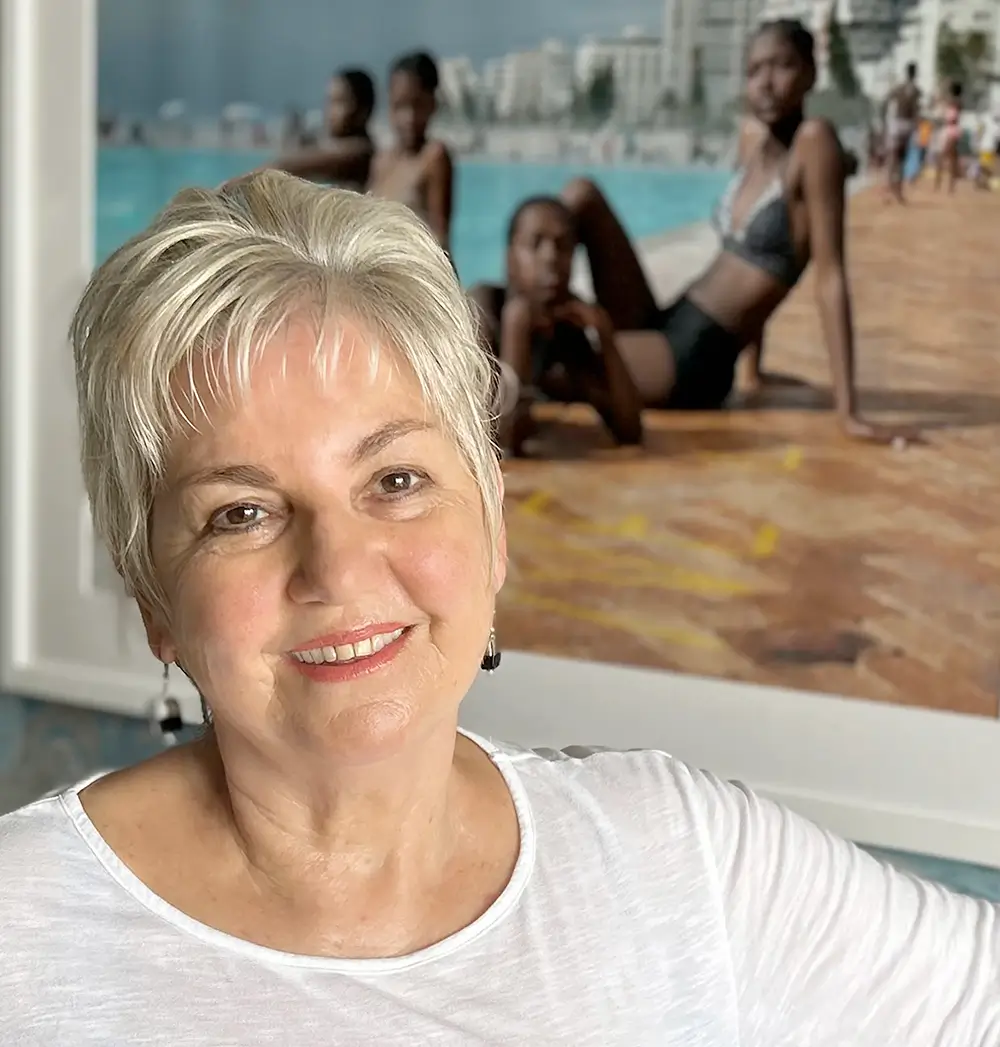Michelle Sank was born in South Africa and settled in the UK in 1987. She cites this background of growing up during Apartheid and being the child of immigrant parents as informing her interest in sub-cultures and the exploration of contemporary social issues and challenges. Her crafted portraits meld place and person creating sociological, visual and psychological landscapes and narratives. Known for her work on youth culture, her practice has expanded into long term projects documenting communities and cultures in depth.
Sank undertook a BA Fine Art Degree at The Michaelis School of Fine Art in Cape Town where her work was picked up by David Goldblatt who became a lifelong mentor. In leaving South Africa in the late 70’s she had a big gap in her career redefining her practice after many years when she completed her MA at De Montford University, Leicester in 2001.
Her photographs have been exhibited and published extensively in the UK, Europe, Australia and Mexico, South Africa and the U.S.A. and her imagery is held in private and permanent collections worldwide to include Open Eye Gallery, Liverpool, The Museum of Youth Culture, UK, Southeast Museum of Photography, Florida and The Museum of Fine Arts, Houston, Texas.
She has undertaken continuous commissions and residencies for prominent galleries and magazines in Europe and the USA and her work has won awards in numerous prestigious competitions to include the Taylor Wessing Prize, British Journal of Photography, Head on Foundation, IPA awards, Lens Culture and The Juliet Margaret Cameron award for Female Photographers. She was recently a winner in The Portrait of Britain and in 2024 she won the Open Portrait section in the Sony World Photography Awards. She has just been granted an Honorary Fellowship by The Royal Photographic Society.
Sank has five published books to date her latest being “Burnthouse Lane” published by Dewi Lewis, 2024 – a celebratory account of an historic working class community in Exeter, Devon, UK.
Burnthouse Lane
The Burnthouse Lane estate was first dreamt up by Exeter City council in the idealistic 1920s in the UK to rehouse people from the West Quarter slum.
Designed along garden city lines and purposely self-contained, it was a place for working-class families to live. The deprivation it was supposed to overcome has continued to haunt it, but the isolated nature of the estate and its intricate labyrinth of lanes have also made for positives, such as a close-knit community and a sense of solidarity among the residents.
Ballade
Ballade is a poetic homage to my birthplace, Cape Town.
My strongest memories are of the Sea Point Promenade in Cape Town and its accompanying Pavilion swimming pool where I frequented the long walkway and its bordering vast grass areas through all of my formative years. I was born there, and my recall is one of tableaus transpiring through play, encounters and festivities. The pool, the walkway, the beaches and the green areas continue to serve as stage sets within which diverse performances unfold.
Article
Burnt House Lane
